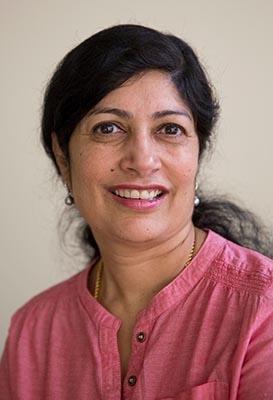
DURHAM, N.C. – With the benefit of pooled resources, the NIH-supported Undiagnosed Diseases Network has demonstrated a novel approach to identifying and diagnosing mystery diseases compared to singular institutions working alone, according to an analysis of key cases.
The network, established by the National Institutes of Health’s Common Fund in 2013, now includes 12 clinical sites within academic medical centers that have expertise in various medical specialties and in cutting-edge genomic sequencing technologies. The clinical sites work together to evaluate patients with difficult to diagnose rare and ultra-rare diseases -- most of which are genetic -- applying clinical and genomic evaluations and innovative research, in collaboration with a coordinating center and core facilities.
“The network addresses the hardest of the hard cases,” said Vandana Shashi, M.D., a genetics specialist, professor in the Department of Pediatrics at Duke and senior author of a study reviewing UDN data on behalf of the network. Most UDN patients enter the study after having exhausted available testing options. “This is when patients turn to UDN sites for answers,” Shashi said. The study appeared online Oct. 23 in Genetics in Medicine, the official journal of the American College of Medical Genetics and Genomics (ACMG).
In the study, Shashi and colleagues analyzed retrospective data from four UDN clinical sites (Duke, NIH, Stanford and Vanderbilt), between 2015 and 2019 to assess the number of diagnoses, new disease gene discoveries and underlying investigative methods required to make the diagnoses.
Of the 791 people evaluated at the four UDN sites, 231 received 240 diagnoses and the centers identified 17 new genetic diseases. About 35% of these diagnoses were straightforward and obtained with either exome or genome sequencing.
Exome sequencing involves sequencing of the protein-coding regions of all ~20,000 genes. Genome sequencing involves sequencing of a person’s complete DNA. Genome sequencing is still not widely available in clinical practice, whereas exome sequencing is considered as standard practice.
Notably, many of these straightforward diagnoses had not been made previously in standard practice, due to financial constraints and thus occurred in the UDN study. She added the UDN accepts patients irrespective of their insurance/financial status or their geographic location, to improve equity.
However, the majority of cases in the UDN analysis were more complex and required additional investigational tools that went well beyond exome and genome sequencing. In fact, 90 diagnoses occurred after exome sequencing had been non-diagnostic prior to applying to the UDN. There were also 45 diagnoses that were non-genetic, attesting to the fact that “The detailed evaluations by UDN specialists often reveal new clinical diagnostic clues,” said Shashi.
To arrive at answers, the UDN-driven investigations used additional comprehensive medical evaluations, innovative analyses of genomic variants, and collaborative science including cutting-edge lab assays and animal modeling. “The remarkable fact is that 65% of the diagnoses could be made because of the UDN’s unique sleuthing, made possible due to the network expertise, collaboration and resources. This would be difficult to centralize at one institution.”
“The UDN, like other NIH Common Fund programs, solves key problems in biomedical research through a high level of innovation and teamwork,” said James Anderson, M.D., Ph.D., Director of the NIH Division of Program Coordination, Planning, and Strategic Initiatives. “By enabling collaboration among a nationwide network of top clinicians and laboratory researchers, the UDN may find clues that may be missed by individual physicians and diagnose some of the most complex medical cases.”
In addition to Shashi, study authors include Kelly Schoch, Cecilia Esteves, Anna Bican, Rebecca Spillmann, Heidi Cope, Allyn McConkie-Rosell, Nicole Walley, Liliana Fernandez, Jennefer N Kohler, Devon Bonner, Chloe Reuter, Nicholas Stong, John J. Mulvihill, Donna Novacic, Lynne Wolfe, Ayat Abdelbaki, Camilo Toro, Cyndi Tifft, May Malicdan, William Gahl, Pengfei Liu, John Newman, David B. Goldstein, Jason Hom, Jacinda Sampson, Matthew T. Wheeler, Undiagnosed Diseases Network, Joy Cogan, Jonathan A. Bernstein, David R. Adams and Alexa T. McCray.
Research reported in the study received support from the NIH Common Fund (U01HG007672, U01HG007708, U01HG007674, U01HG007530). The NIH clinical site (the Undiagnosed Diseases Program) was supported by the NIH Common Fund and the National Human Genome Research Institute (NHGRI) Intramural Research Program (HG000215-17). The content is solely the responsibility of the authors and does not necessarily represent the official views of the National Institutes of Health.
This article was originally published on the Duke Health corporate website.